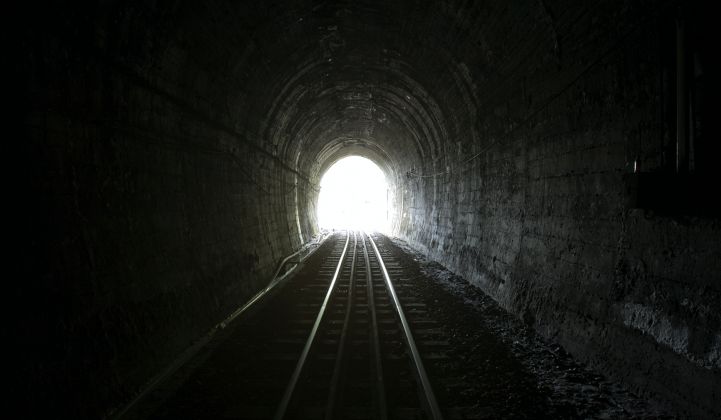The Affordable Clean Energy rule, a cornerstone of President Trump’s environmental deregulatory efforts, has been deemed “legally flawed” by a federal appeals court.
A Tuesday ruling from the U.S. Court of Appeals for the Washington, D.C. circuit vacated the regulation targeting power plant emissions, wiping away the administration’s replacement for the Obama-era Clean Power Plan just a day before President-elect Joe Biden’s inauguration.
While Trump has made repealing and replacing Obama-era environmental rules a priority — targeting more than 100 rules in all — Biden has promised to pursue climate action during his administration. Regulating carbon dioxide emissions from the power sector under the Clean Air Act, as both the Clean Power Plan and the Affordable Clean Energy (ACE) rule aimed to do, is a key tool. The court's decision allows Biden to more quickly move forward with such a strategy.
“The D.C. Circuit has provided the Biden administration a clean slate upon which to craft new regulations related to emissions from power plants, but it also forced the administration to start over again at square one,” said Kevin Minoli, a partner at law firm Alston & Bird who formerly served as legal counsel at the Environmental Protection Agency.
Unlike the Clean Power Plan’s national and state-specific emissions goals, the ACE rule set coal plant emissions standards on a facility-by-facility basis. Beyond having more lax emissions standards than the Clean Power Plan overall, the ACE rule's focus on standards for individual plants could lead to upgraded coal plants being run more often, critics of the rule said.
The EPA’s analysis suggested the ACE rule would cut carbon dioxide emissions by just 0.7 to 1.5 percent from 2005 levels by 2030, compared to the Clean Power Plan’s goal to lower national carbon emissions to 32 percent below 2005 levels by 2030. Other analyses suggested the ACE rule could even increase emissions.
Significant shifts in the energy sector, as renewables proliferated in recent years and coal plants shuttered, helped the U.S. continue cutting emissions in the absence of federal requirements to do so. From 2005 to 2019, though electricity generation increased by nearly 2 percent, electricity-related carbon dioxide emissions fell by 33 percent, according to the U.S. Energy Information Administration. Non-carbon-emitting generation increased by 35 percent in that period.
Both the Clean Power Plan and the ACE rule garnered pushback from state governments. Twenty-seven states sued over the implementation of the Clean Power Plan (though some later changed their stance), which was stayed by the Supreme Court before it was enacted. Twenty-three attorneys general plus numerous environmental and clean energy groups fought the ACE rule, arguing that it did not fulfill requirements for the EPA to regulate emissions.
Though numerous states and large investor-owned utilities have since established their own clean energy or emissions standards, Biden’s team will have to consider the possibility of similar challenges as it works to craft new regulation.
“Now the hard work begins to put in place a permanent, legally sound rule,” said Jessica Bell, deputy director of New York University’s State Energy and Environmental Impact Center, in a statement on the Tuesday court ruling.
EPA spokesperson Molly Block told Greentech Media the agency is “disappointed” by the ruling. Though Block said the agency “will explore all available litigation options,” it’s extremely unlikely the EPA will pursue the ACE rule under the new administration, which could also erode any remaining state support for the rule. Biden has pledged to institute a standard of 100 percent clean electricity by 2035.
“Intervenors may seek further review, but they will face an uphill battle if they do not have government support,” said Minoli in an email.
